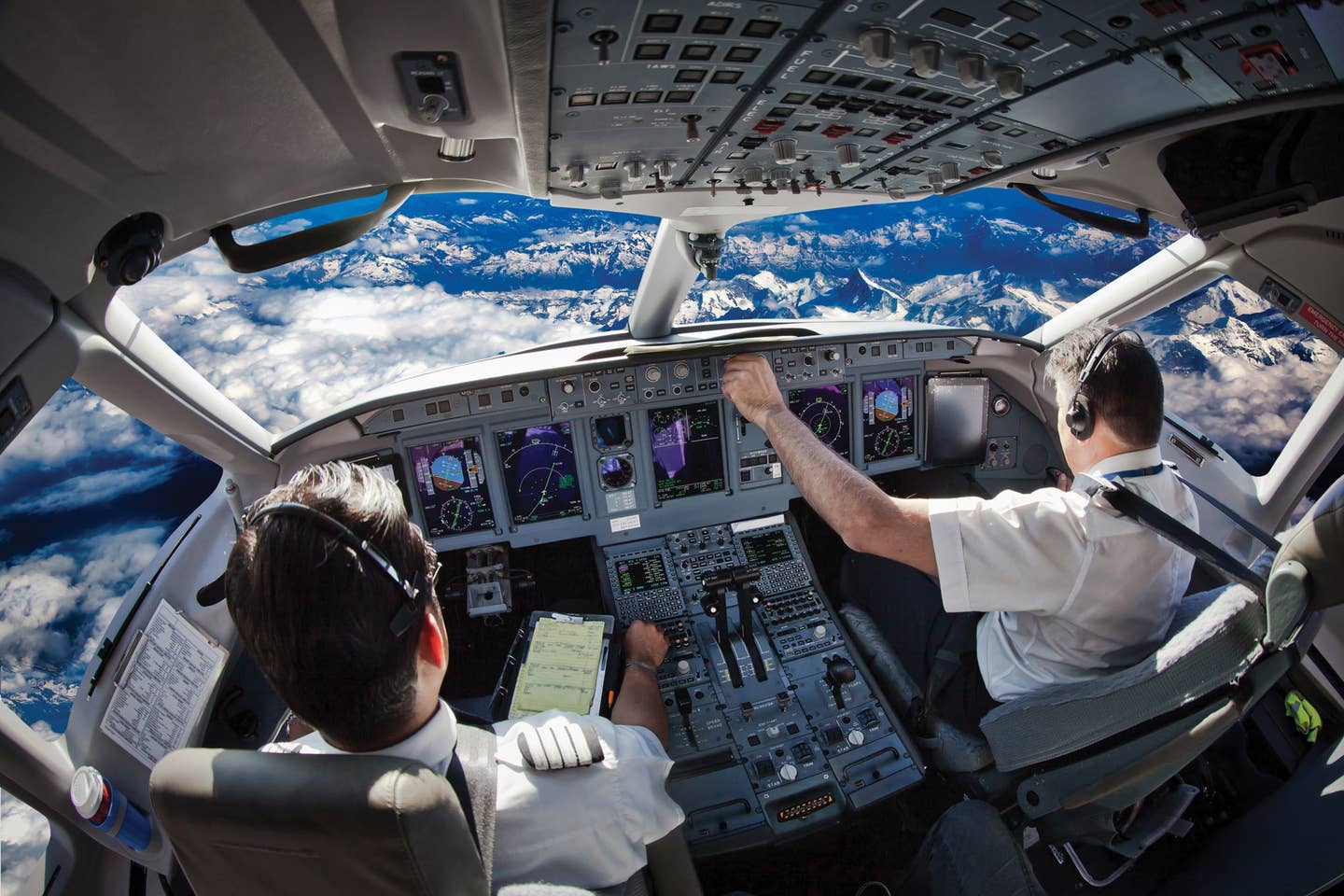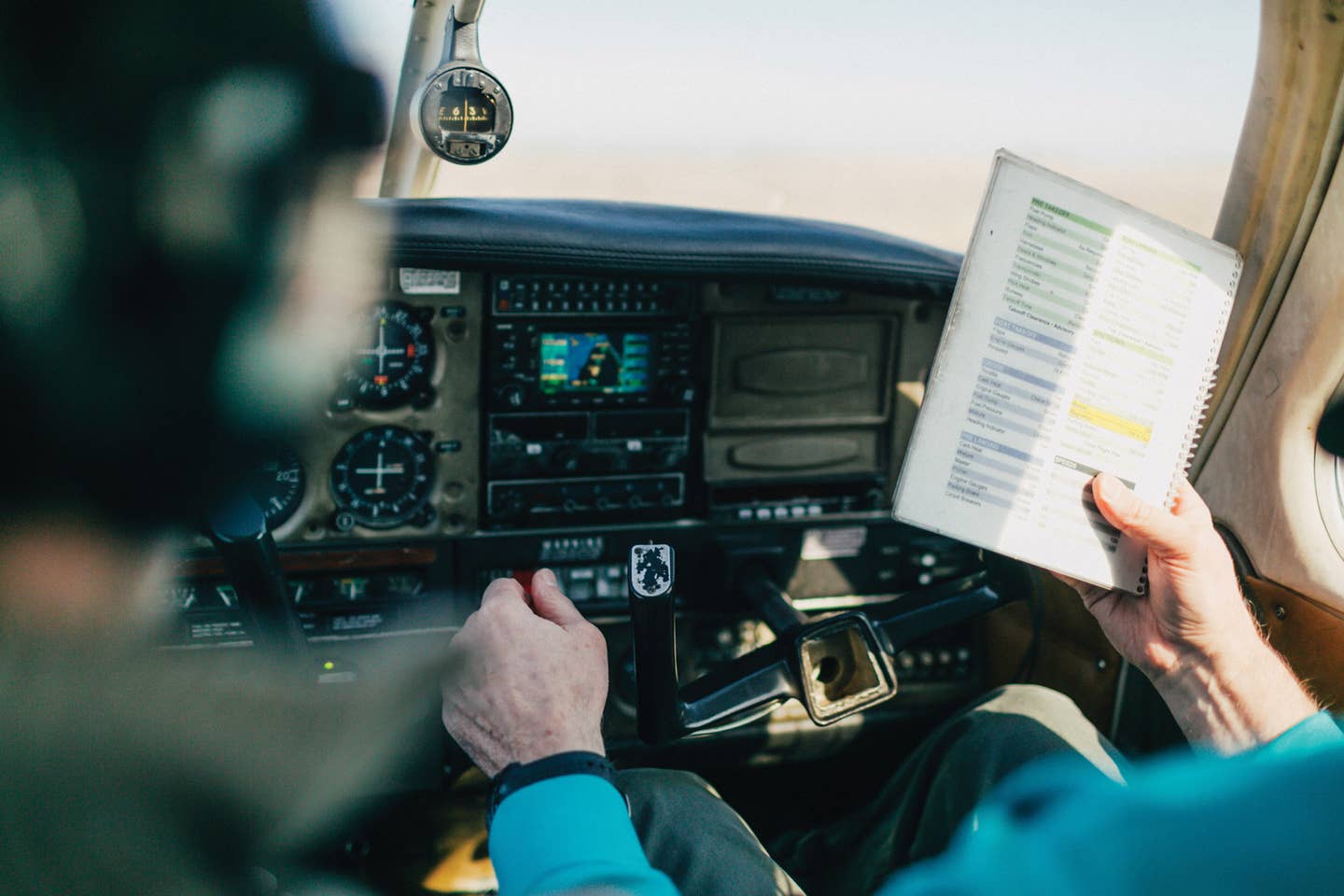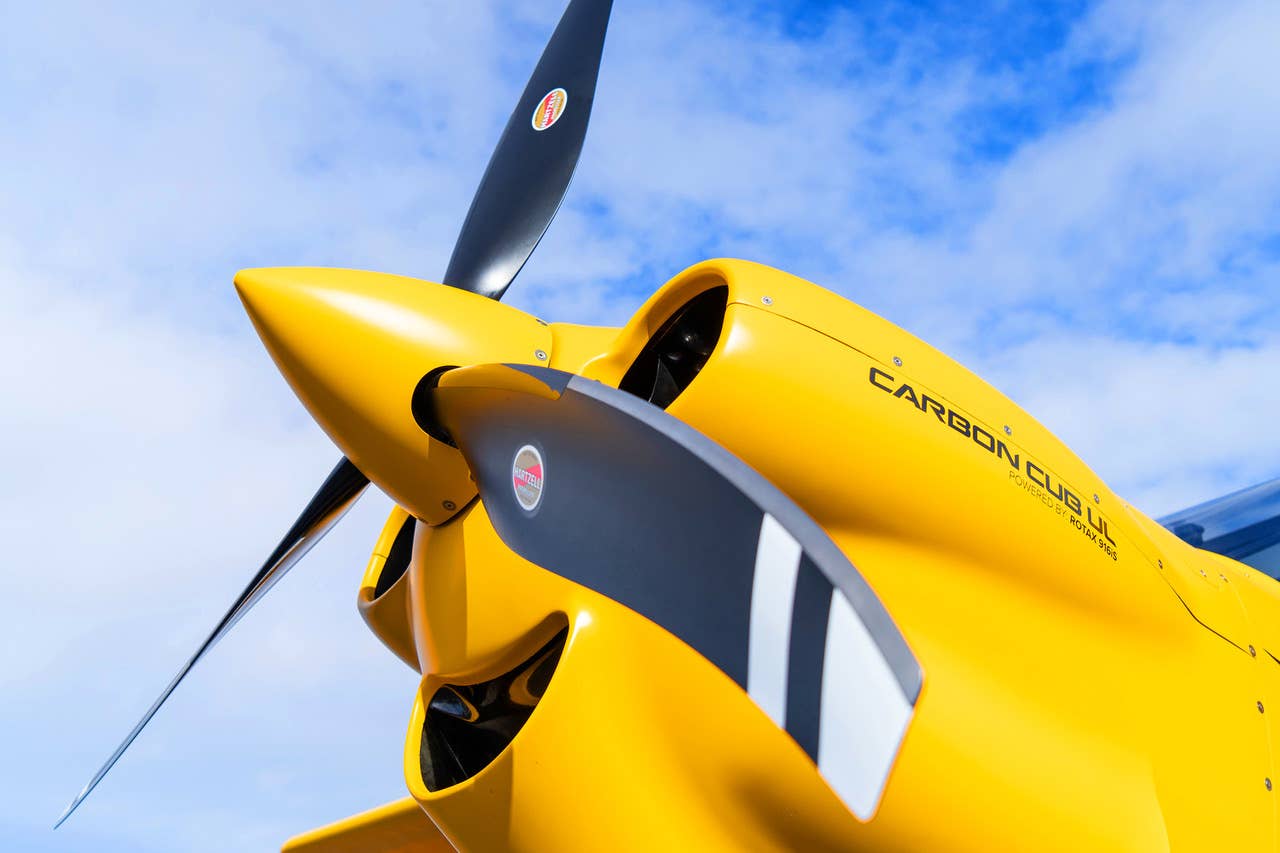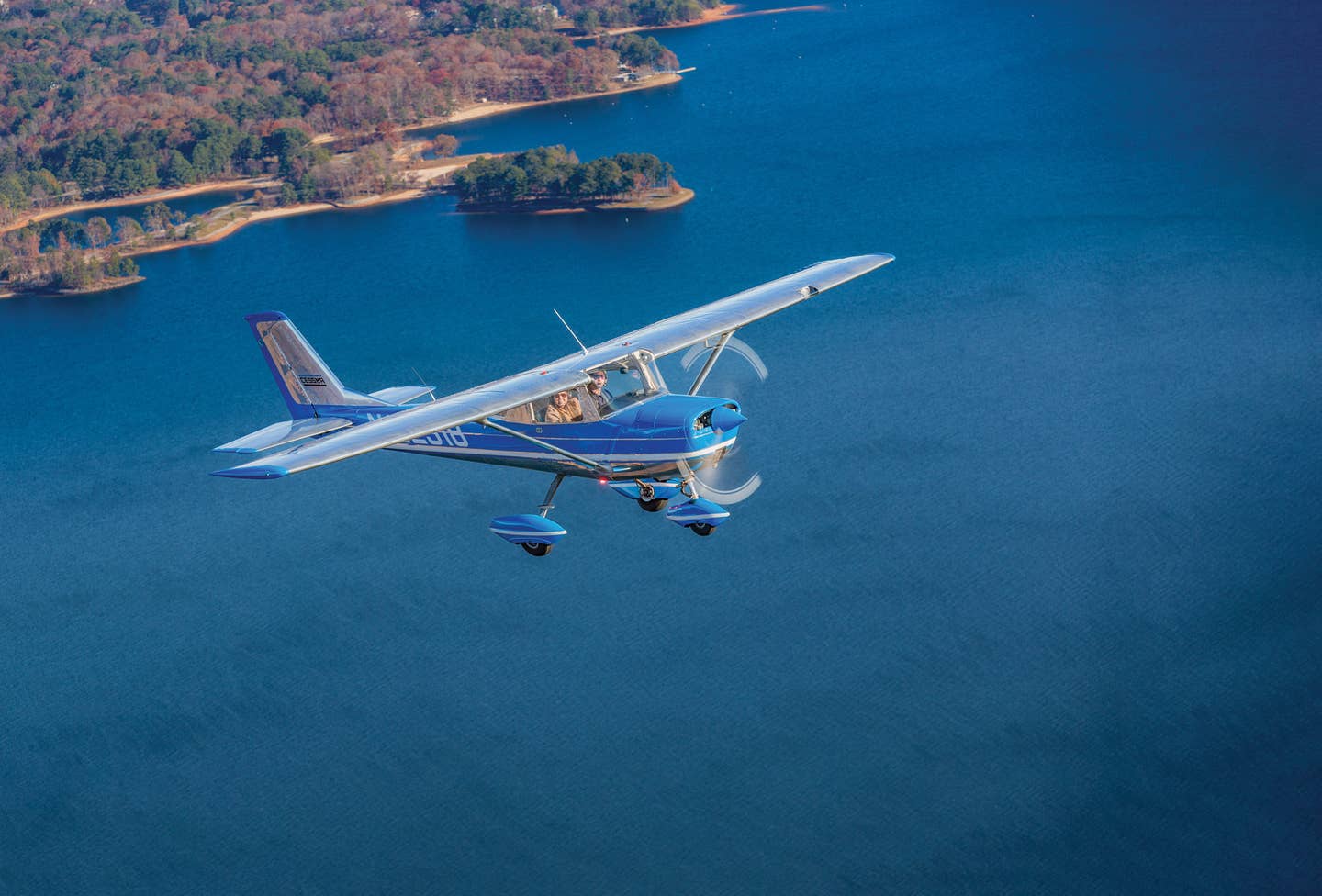The Touchdown Set-Up
Be prepared for any last-minute corrections when landing
One of the really great things about most light general aviation airplanes is that they generally are highly responsive to control and power inputs, and touchdown speeds are comparatively low, making it possible to turn a sloppy approach into a relatively benign landing through some last-minute maneuvering. Step up to bigger aircraft, especially something as big as a three-engine MD-10 jet, and you have very little room for last-minute fudging. The approach must be stabilized, which includes providing the proper control inputs at the right moments in order to ensure runway alignment while arresting the descent rate. The National Transportation Safety Board (NTSB) recently completed its investigation of an accident involving a Federal Express MD-10-10F cargo jet, which made a hard landing while still holding a crab for wind correction.
Flight 647 was landing at Memphis International Airport (MEM) in Memphis, Tenn., at 12:26 p.m., on December 18, 2003. The captain, a company check airman, was conducting a line check of the first officer.
According to the cockpit voice recorder (CVR), at about 12:05:37, Memphis Air Route Traffic Control Center advised the pilots to contact Memphis Approach Control. The approach controller advised the pilots to expect to land on runway 36L and informed them that the ATIS information Zulu was current.
At about 12:13:18, the controller advised the pilots to contact MEM Approach Control on a different frequency. At about 12:14:33, MEM approach control cleared the pilots to descend and maintain 5,000 feet and turn 10 degrees to the right. Afterward, the controller advised the pilots that they should expect to land on runway 36R instead of 36L, as previously instructed.
At about 12:19:00, the captain stated that the localizer was "alive" and that they were 18 miles from touchdown. About 10 seconds later, the approach controller told the pilots to reduce the airspeed to 170 knots and cautioned them about possible wake turbulence from an Airbus that was ahead of them. The captain acknowledged the speed reduction and stated that he was looking for the Airbus. At about 12:19:24, the first officer stated, "Flaps 22 [degrees], please."
About 12:19:28, the captain stated, "I got an Airbus right here, and another one out there looks about level with us."
About 20 seconds later, the approach controller cleared flight 647 to descend and maintain 2,000 feet. At about 12:20:20, the captain advised the first officer that they had intercepted the localizer, adding, "We're not yet cleared for the approach."
The first officer responded, "That's noted."
At 12:21:00, the pilots told the approach controller that they saw the airport. The approach controller then radioed, "FedEx six-forty-seven-heavy cleared approach runway three-six-right. Maintain 170 knots until MCGHE [6.7 DME miles out], and you can contact the tower now." The captain acknowledged the clearance and then switched to the MEM tower frequency.
At about 12:21:53, the MEM local controller advised, "FedEx six-forty-seven-heavy, MEM tower, number two following a heavy Airbus two-mile final, caution. Wake turbulence, runway three-six-right. Gain and loss of 10 [knots] short-final runway three-six-right, cleared to land."
At about 12:22:31, the captain suggested that the first officer carry about four knots of extra speed. "I don't like to add extra speed, but you know, three or four knots can make a lot of difference if you're bumpin' around back and forth," he said.
The first officer responded, "Good enough. Let's go with landing gear down. Before landing checklist, please. The glideslope is alive."
The captain responded, "Spoilers are armed. The gear is down and three green. Flaps are 22. Flaps to go."
At about 12:23:38, the first officer requested 35 degrees of flaps, and the captain complied. At about 12:23:52, the CVR recorded a central aural warning system (CAWS) wind-shear alert. The captain stated, "Okay, it's all right."
The first officer remarked, "Goodness."
The captain subsequently said, "Visual. Stable. We got a 9,000-foot runway, and we land at 146. A pretty good headwind oughta work out okay."
At about 12:24:52, the first officer stated, "The autopilot is coming off."
At about 12:25:02, the captain added, "The checklist is complete. You're cleared to land."
The first officer responded, "Thanks."
The CVR picked up the first sounds of a touchdown at about 12:25:53. Three seconds later, the first officer stated, "Wow."
About 14 seconds after touchdown, the aircraft's flight data recorder (FDR) showed that the right wing suddenly moved about six degrees lower. About the same time, the CAWS landing-gear alert began to sound, which repeated until the end of the recording.
At about 12:26:25, the captain declared, "Here we go," and the airplane began to veer off the right side of the runway. Five seconds later, the airplane came to rest in the grass off the right side of the runway.
At the NTSB's request, the Weather Sensing Group at the Massachusetts Institute of Technology at the Lincoln Laboratory reviewed the weather data. According to the report, there was no evidence of a horizontal wind shear or other hazardous conditions near the runway at the time of the accident. The report noted a pattern of buoyancy waves aloft that might have been responsible for the CAWS wind-shear warning recorded on the airplane's CVR.
The NTSB calculated that the airplane was yawed about 5.4 degrees nose-left of the runway heading when it touched down. The NTSB also calculated that the cockpit was about 20 feet right of the runway centerline. Although the FDR pitch data showed no evidence of a flare before the airplane touched down, the FDR elevator position data showed that the elevator moved from about 2.75 degrees to 12.75 degrees airplane nose up almost immediately after the left main landing gear touched down, just as the right main landing gear touched down. The study also revealed that the airplane's longitudinal axis was not aligned with its direction of flight or the runway when it touched down. Rather, the nose of the airplane was aligned about 6.5 degrees left of the airplane's ground track.
FedEx's MD-11 and MD-10 flight manual says, in part: "Crosswind landings are accomplished by flying the final approach in a wings-level attitude with a crab into the wind. At approximately 200 feet AGL, align the fuselage with the runway by smoothly applying rudder and maintain runway centerline by lowering the upwind wing."
The flight manual also stated that to ensure that the airplane is in the correct landing attitude and airspeed at touchdown, pilots should smoothly increase back pressure on the control column as the airplane descends through 30 feet AGL, bringing the nose of the airplane up an additional two degrees to 2.5 degrees above its approach pitch attitude (resulting in about a seven-degree to 7.5-degree nose-up pitch attitude). The flight manual further stated that this pitch attitude should be established by 10 feet AGL and that, subsequently, a constant pitch attitude should be maintained to touchdown.
The captain told investigators that he was satisfied with the first officer's flying techniques during the entire approach. He indicated that he did not observe anything "out of limits." The first officer stated that she maintained a wind correction angle of about 10 degrees left of the runway heading and an approach airspeed of 149 knots until the airplane descended through about 200 feet AGL. According to FDR data, the airplane maintained about a five-degree nose-up pitch attitude from about 1,500 feet AGL until it touched down. No increase in pitch to dissipate airspeed and attain the proper landing attitude was observed in the FDR data as the airplane neared touchdown.
The NTSB determined that the probable causes of the accident were the first officer's failure to properly apply crosswind-landing techniques to align the airplane with the runway centerline and to arrest the airplane's descent rate (flare) before the airplane touched down, and the captain's failure to adequately monitor the first officer's performance and command or initiate corrective action during the final approach and landing.
Peter Katz is editor and publisher of NTSB Reporter, an independent monthly update on aircraft accident investigations and other news concerning the National Transportation Safety Board. To subscribe, write to: NTSB Reporter, Subscription Dept., P.O. Box 831, White Plains, NY 10602-0831.

Subscribe to Our Newsletter
Get the latest Plane & Pilot Magazine stories delivered directly to your inbox






